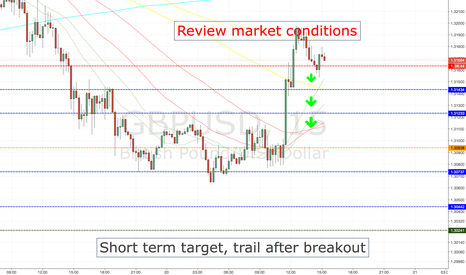long term debt to total asset ratio: Debt ratios financial leverage ratios
Содержание

The loan terms also explain how flexible the company can be with the covenants. These rules force management to be disciplined because if the debt covenants are broken, the company will have to repay the loans immediately. This could cause a negative financial or reputational impact such as fines, foreclosures or credit downgrades. This ratio provides a sense of financial stability and overall riskiness of a company.
The company turns around and uses that loan to reinvest in the company in order to grow the company. We can use the debt to asset ratio to measure the amount or percentage of debts to assets. As we will see in a moment, when we calculate the debt to asset ratio, we use all of its debt, not just its loans and debt payable.
It is important to compare the debt to total asset ratio of various companies within the same sector. The nature of some industries may require a company to borrow a lot of money. Thus, comparing this ratio of companies in different sectors might give you a misleading picture.
Trend and long term debt to total asset ratio analysis will show how well the financial position is being managed. Trend analysis indicates whether a company’s financial position is improving or deteriorating over time. Industry analysis will show how well the company is performing compared to other companies in the same industry. Financial leverage ratios measure a company’s ability to meet its financial obligations as they come due. Leverage ratios indicate a company’s ability to repay the principal amount of its debt, pay interest on its borrowings, and meet its other financial obligations.

This ratio allows the investors to identify the amount of control utilized by a company and compare it to other companies to analyze the total risk experience of that particular company. The debt to asset ratio is also considered for calculating a company’s financial situation compared to other companies. This way, investors know if it is a good choice to invest in a company and trust that they will repay the loan with profits. Eventually, if this ratio yields out negative information about the company, there are high chances that investors will not likely invest any money. When you are making a loan, in the first step, you will analyze if the company can repay or make the returns.
Long Term Debt Ratio Analysis
Debt-to-fairness ratio is the important thing financial ratio and is used as a standard for judging an organization’s monetary standing. The long-term debt ratio is a figure that indicates the percentage of total assets’ value given by the long-term debts. Long term debt to total asset ratio explained a measure of the extent to which a company is using long term debt.

It is a great tool to assess how much debt the company uses to grow its assets. This ratio tells you the amount of a company’s debt compared to a company’s assets. The same company has $90,000 in long-term debt like business loans and other business debt. A ratio of less than one means that a company has more current assets than current liabilities.
What is the Total-Debt-to-Total-Assets Ratio?
For example, an increasing trend indicates that a business is unwilling or unable to pay down its debt, which could indicate a default in the future. Long term debt to total assets is one of the leverage ratios analysts use to measure a corporation’s dependency on debt. These ratios’ purpose is to represent the capability of corporations to meet their financial obligations. The long-term debt to total asset ratio is a solvency orcoverage ratiothat calculates a company’s leverage by comparing total debt to assets. In other words, it measures the percentage of assets that a business would need to liquidate to pay off its long-term debt. This ratio is also sometimes referred to as the “liabilities to equity ratio”.
Therefore, the company has more debt on its books than all of its current assets. Should all of its debts be called immediately by lenders, the company would be unable to pay all its debt, even if the total-debt-to-total-assets ratio indicates it might be able to. If a company has a total-debt-to-total-assets ratio of 0.4, 40% of its assets are financed by creditors, and 60% are financed by owners’ (shareholders’) equity. The interest coverage ratio is a measure of a company’s ability to meet its interest payments. Interest coverage ratio is equal to earnings before interest and taxes for a time period, often one year, divided by interest expenses for the same time period.

To determine if this ratio is a decent number, we need to compare this result to other companies of the same type. Otherwise, we can also look at the past ratio value to see if the number is increasing, decreasing, or stagnant. To draw meaningful insights from the long-term debt to total asset ratio, you will need to look at the ratio of comparable firms and also the historical values of this ratio. Assume that you’re investing in Company ABC and you’d like to find out how many percentages of its assets are currently financed by loans and other long-term financial obligations.
Not all companies choose to use debt to grow, and many of these decisions depend on the sector the company operates in and the cash flows the company generates. Many companies can self-fund their growth, but others choose to use debt to fuel their growth. Experts generally consider a debt to asset ratio good if it is .4 (40%) or lower.
Since debt financing additionally requires debt servicing or regular curiosity funds, debt is usually a far dearer form of financing than equity financing. The ensuing debt-to-equity ratio of two.three may scare off some would-be investors. From a pure danger perspective, lower ratios (0.4 or decrease) are thought-about better debt ratios. Since the interest on a debt must be paid regardless of business profitability, an excessive amount of debt might compromise the whole operation if money circulate dries up.
What Does the Long-Term Debt-to-Total-Assets Ratio Tell You?
A larger debt to fairness ratio signifies that more creditor financing is used than investor financing . A high gearing ratio exhibits a high proportion of debt to equity, while a low gearing ratio shows the other. Both lenders and traders scrutinize a company’s gearing ratios as a result of they mirror the degrees of risk involved with the corporate. Thus, companies with excessive debt-to-fairness ratios may not have the ability to appeal to additional lending capital. The debt ratio for a given firm reveals whether or not or not it has loans and, if that’s the case, how its credit score financing compares to its assets. Before making any comments when using the LT debt to total assets ratio, you should first look at the industry in which the firm is operating.
The ratio doesn’t consider several debt obligations such as ‘short-term debt’. A company might be at immediate risk of a large debt falling due in next 1 year, which is not captured in the long-term debt ratio. One thing to note is that companies commonly split up the current portion of long-term debt and the portion of debt that is due in 12 or more months. For this long-term debt ratio equation, we use the total long-term debt of the company. This means that we add the current and long-term portions of long-term debt. A ratio greater than 1 shows that a considerable portion of the assets is funded by debt.
- Companies with the next debt to equity ratio are thought-about extra risky to creditors and investors than corporations with a lower ratio.
- For instance, if a company has total assets of $100 million and total debt of $30 million, its debt ratio is 30% or 0.30.
- The long-term debt to total asset ratio is a solvency orcoverage ratiothat calculates a company’s leverage by comparing total debt to assets.
- For example, in the numerator of the equation, all of the firms in the industry must use either total debt or long-term debt.
- To find relevant meaning in the ratio result, compare it with other years of ratio data for your firm using trend analysis or time-series analysis.
The long-term debt to equity ratio shows how much of a business’ assets are financed by long-term financial obligations, such as loans. To calculate long-term debt to equity ratio, divide long-term debt by shareholders’ equity. Short term debt should be kept off — otherwise it is the capitalization ratio, or “total debt to assets” that is calculated, instead of the long term debt ratio.
Thus, we can calculate the year-on-year results of a company’s long-term debt ratio to determine the leverage trend. Total assets are our second variable, which is the total amount of assets owned by an entity—whether an individual or corporation. This kind of calculation is what investors and creditors use to gauge the risk factor of a company, i.e. how much debts are being used to fund its assets.
Trend Analysis
All company assets, including short-term, long-term, capital, tangible, or other. The total-debt-to-total-assets ratio is calculated by dividing a company’s total amount of debt by the company’s total amount of assets. Liquidity ratios are a class of financial metrics used to determine a debtor’s ability to pay off current debt obligations without raising external capital. In contrast, if a business has a low long-term debt-to-assets ratio, it can signify the relative strength of the business.
The debt-to-capital ratio gives analysts and investors a better idea of a company’s financial structure and whether or not the company is a suitable investment. All else being equal, the higher the debt-to-capital ratio, the riskier the company. Non-interest bearing debt includes accrued expenses, trade payable, etc. The debt to equity ratio is also called the danger ratio or leverage ratio. It is a fast software for figuring out the amount of economic leverage an organization is using. In other phrases, it gives you an concept of how a lot an organization makes use of debt to pay for operations.
Debt to Equity Ratio Formula
The total-debt-to-total-asset ratio is calculated by dividing a company’s total debts by its total assets. While the long-term debt to assets ratio only takes into account long-term debts, the total-debt-to-total-assets ratio includes all debts. This measure takes into account both long-term debts, such as mortgages and securities, and current or short-term debts such as rent, utilities, and loans maturing in less than 12 months. The debt to asset, debt to equity, and interest coverage ratios are great tools to analyze the debt situation of any company.
It can also be used to assess the debt repayment ability of a company to check if the company is eligible for any additional loans. Finally, the debt to asset ratio formula can be derived by dividing the total debts by the total assets . The higher the level of long term debt, the more important it is for a company to have positive revenue and steady cash flow. It is very helpful for management to check its debt structure and determine its debt capacity.
It provides us insights about the current standing of a company’s financial position and its ability to meet its financing needs. To evaluate LTD/TA, we can express the value in either decimal or percentage. There’s no exact number to identify if a company can be considered financially safe. Not to mention that different industries are more dependent on capital than the others. Long Term DebtsLong-term debt is the debt taken by the company that gets due or is payable after one year on the date of the balance sheet. It is recorded on the liabilities side of the company’s balance sheet as the non-current liability.
